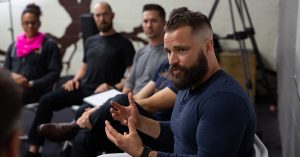 Youth Fitness & Performance is a Tough Business. Early in my days, an athletic trainer told me this, and it fueled my fire.
Youth Fitness & Performance is a Tough Business. Early in my days, an athletic trainer told me this, and it fueled my fire.
Do you believe that youth fitness & performance is a tough business?
There have certainly be seasons of my career where I entertained this and I am sure that if you are reading this blog you may have as well.
I want to share my story, in hopes to encourage you.
It’s one example, that likely represents many others’ journey in the youth fitness and performance industry. It’s tough business, but, it’s a great one. We must persevere.
A snapshot of my Journey in youth fitness & performance
My journey started out in a small corner of a gym called Snap Fitness. This particular Snap Fitness was not very large. I had minimal space to work with, an agility latter and a Vertimax. (Sound familiar?)
I was doing fairly well, considering the limited space I had. I was bringing groups of athletes into Snap. Some of the Snap members complained that the group training was a distraction. The decision was made, by the owner, to move me to a vacant building.
Soon after, that building was sold.
I was then moved to another vacant building. Again, this didn’t last long as my space was remodeled to accommodate medical professionals. To make a long story short, Snap went out of business and I was left looking for a place to settle. (I learned early, that it was a game of adjustments)
Giving up on being a trainer never crossed my mind.
I ended up in another small gym called Accelerated. This gym was located in a different city. Once again, this new-found home didn’t last long because the current owner decided to get out of the fitness business.
So, there I was with my Vertimax and my agility ladder wondering, “What now?”. (Have you ever asked this question?)
I was told there was a studio for rent not more than a couple miles from my house. I took a look at the place and it was ideal. I had enough room to train and didn’t have to worry about sharing my space with anyone else.
When I was moving my equipment out of Accelerated, an athletic trainer I know advised me not to buy a lot of weights, “It’s a tough business,” he said. (I learned that most don’t see the passion that drives us, so they warn us-we get to choose what we believe).
This fueled me, and I went “all in”! I bought a lot of equipment. I initially spent over ten thousand dollars to get me rolling. From that point on, I piecemealed the rest of the equipment that I needed.
The cost of my equipment and all the courses I took ran well over twenty thousand dollars. Now, I was in debt! I Remember lying on my bed looking up at the ceiling and saying, “What have I done?” “How am I going to get out of this?” “The athletic trainer was right!” (Sometimes we learn the hard way, but don’t let that get in the way, learn from it).
The moment I said this, the phone rang and it was a mother looking to get her kids in to train with me. (On the other side of doubt is almost always clarity, keep going).
I was fighting an uphill battle. There was a well known athletic training facility that had a foothold in the local schools. Simultaneously, I heard that the other local training facility was trying to discredit my place. I wasn’t offended by this, but encouraged. They must have known that my training methods were credible and top notch. (We get to choose what we believe in the process, I chose to reframe the challenges into opportunities).
I now have athletes coming from all over to train with me, some from several hours away. We have been able to navigate COVID, gym closures, relocations and turbulence.
The Lessons from the Journey:
There have been many lessons. Perhaps this industry is tough, but it can also be incredible rewarding.
Here are some of the lessons, feel free to share yours in the comments!
1- All Big things, Start Small.
2- It’s a game of adjustments.
3- We get to choose what we believe & who we believe.
4- Let passion lead you.
5-Sometimes we learn the hard way, but don’t let that get in YOUR way. Grow from what you’re going through.
6- On the other side of doubt, is almost always clarity & confidence.
7- Reframe challenges into opportunities, it will change the game.
8- Get Educated & Surround yourself with others that are like-minded
Look, this is just a snapshot of my journey that is now over two decades long. Many ups and downs. I knew I could make it. I had the desire and perseverance to succeed. If you believe that youth fitness & performance is a tough business, then it will likely shape and form the way you show up. That’s not good nor bad, but my hope is that you persist with what you truly desire.
It can be an uphill climb, full of adversity.
If you have faith you can overcome all the obstacles that are seen and unforeseen. Believe, believe and believe some more. Your golden nugget awaits, but you’ll have to dig through some rocky soil to find it.
If you enjoyed this article, check out my blog Using Agility Bags to Develop Game Speed
Author: Doug Heslip
 Doug Heslip is the owner of Heslip Elite Sports Performance Training in Negaunee, MI and the creator of Seek & Destroy – Elite Running Back Drills a video product for football coaches. He works with young athletes in a variety of sports and teaches football coaches how to incorporate speed & agility training into their sessions.
Doug Heslip is the owner of Heslip Elite Sports Performance Training in Negaunee, MI and the creator of Seek & Destroy – Elite Running Back Drills a video product for football coaches. He works with young athletes in a variety of sports and teaches football coaches how to incorporate speed & agility training into their sessions.
For more information on developing athletes, the IYCA Certified Athletic Development Specialist is the gold-standard certification for anyone working with athletes 6-18 years old.
Use Code HESLIP15 at checkout to receive 15% all of the IYCA resources.
The course materials were created by some of the most experienced and knowledgeable professionals in the industry, and the content is indisputably the most comprehensive of any certification related to athletic development. Learn more about the CADS certification here:
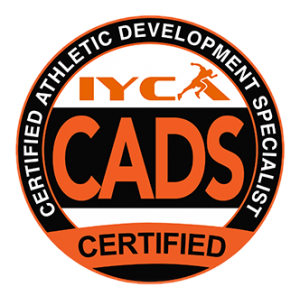
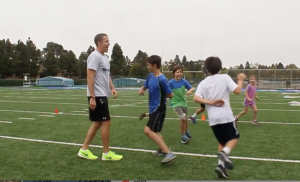
 One of the fastest and easiest ways to create a community where young athletes feel like they belong is for coaches and other athletes to
One of the fastest and easiest ways to create a community where young athletes feel like they belong is for coaches and other athletes to  This level of consistent feedback brings parents into the process. It leaves no question as to where their investment of time, money, and energy in your program is going. They are less likely to discontinue participation when they understand where their child is in the developmental process. It doesn’t hurt that they get to know you better either.
This level of consistent feedback brings parents into the process. It leaves no question as to where their investment of time, money, and energy in your program is going. They are less likely to discontinue participation when they understand where their child is in the developmental process. It doesn’t hurt that they get to know you better either. 
 Brett Klika is a youth performance expert and a regular contributor to the IYCA who is passionate about coaching young athletes. He is the creator of the
Brett Klika is a youth performance expert and a regular contributor to the IYCA who is passionate about coaching young athletes. He is the creator of the 
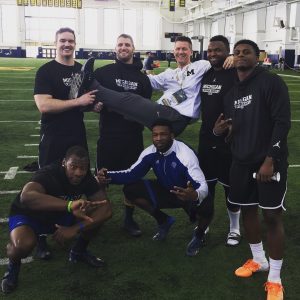 basketball players at the time, but I happened to help some football players improve their 40 times by teaching them more efficient mechanics. Well, they told their friends, and those friends told others, and before you knew it I had all sorts of people coming to me to run faster.”
basketball players at the time, but I happened to help some football players improve their 40 times by teaching them more efficient mechanics. Well, they told their friends, and those friends told others, and before you knew it I had all sorts of people coming to me to run faster.” evolving and stay current with what is happening in particular segments of the industry. Reading journal articles, attending conferences and sporting events, and fostering relationships with key people are all part of the process.
evolving and stay current with what is happening in particular segments of the industry. Reading journal articles, attending conferences and sporting events, and fostering relationships with key people are all part of the process.
 Jim Kielbaso is the President of the IYCA and Owner of
Jim Kielbaso is the President of the IYCA and Owner of 
 way we consume information about strength and conditioning, and it’s probably not the best way for us to make decisions.
way we consume information about strength and conditioning, and it’s probably not the best way for us to make decisions. We see something on Instagram from someone with a bunch of followers, and we instantly think it must be the truth instead of digging deeper, doing our own research and getting the whole story. So, whether it’s politics or strength & conditioning, it’s important to get the whole story before you make a decision.
We see something on Instagram from someone with a bunch of followers, and we instantly think it must be the truth instead of digging deeper, doing our own research and getting the whole story. So, whether it’s politics or strength & conditioning, it’s important to get the whole story before you make a decision. sources of information. Of course, I use social media, but I also go to scientific journals, I take courses, I have multiple degrees, I read lots of books, I attend conferences, and I go to people who have many years of experience in the industry who put out quality information and who are in the trenches daily. These people have been doing it for years, documenting the results, analyzing their experiences and their programs, and then making decisions based on those analytics.
sources of information. Of course, I use social media, but I also go to scientific journals, I take courses, I have multiple degrees, I read lots of books, I attend conferences, and I go to people who have many years of experience in the industry who put out quality information and who are in the trenches daily. These people have been doing it for years, documenting the results, analyzing their experiences and their programs, and then making decisions based on those analytics. Along with the effectiveness of a training stimulus, you have to weigh the risk vs. benefit to help determine whether it’s the right choice to include in a program. For example, when I see kids standing on stability balls or doing circus tricks, I feel like the training benefit is incredibly small while the risk is fairly high. Or, I’ll see kids stacking a bunch of plates up on top of boxes to see how high they can jump. Again, the training benefit of jumping onto a box is no greater than jumping in the air as high as you can and landing on the ground, but the risk is MUCH greater. So, I personally don’t feel like the risk outweighs the benefit.
Along with the effectiveness of a training stimulus, you have to weigh the risk vs. benefit to help determine whether it’s the right choice to include in a program. For example, when I see kids standing on stability balls or doing circus tricks, I feel like the training benefit is incredibly small while the risk is fairly high. Or, I’ll see kids stacking a bunch of plates up on top of boxes to see how high they can jump. Again, the training benefit of jumping onto a box is no greater than jumping in the air as high as you can and landing on the ground, but the risk is MUCH greater. So, I personally don’t feel like the risk outweighs the benefit.
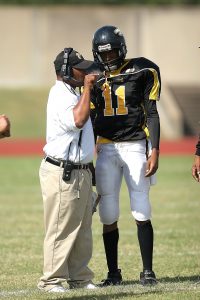
 Jared Markiewicz is the founder and CEO of Functional Integrated Training, in Madison, WI. Jared has worked with a wide array of athletes including middle schoolers, collegiate and professional athletes, as well as adults – all looking to find the best version of themselves. He sits on the IYCA Advisory Board, has gone through many IYCA certifications, and is a regular contributor and speaker for the IYCA.
Jared Markiewicz is the founder and CEO of Functional Integrated Training, in Madison, WI. Jared has worked with a wide array of athletes including middle schoolers, collegiate and professional athletes, as well as adults – all looking to find the best version of themselves. He sits on the IYCA Advisory Board, has gone through many IYCA certifications, and is a regular contributor and speaker for the IYCA.
